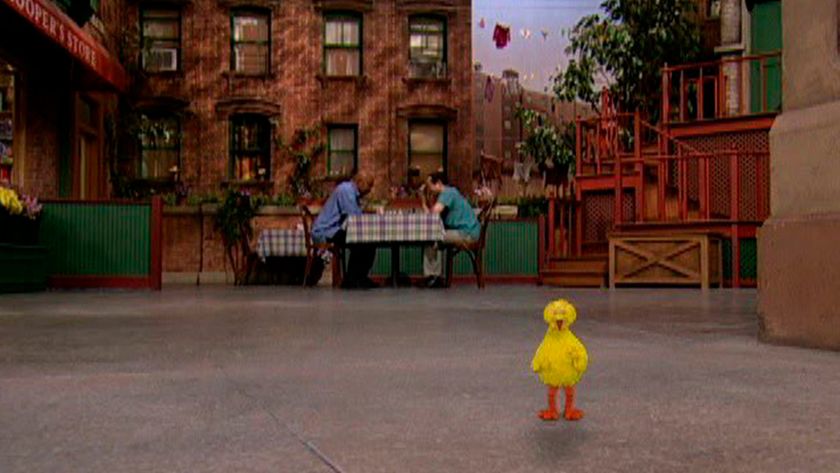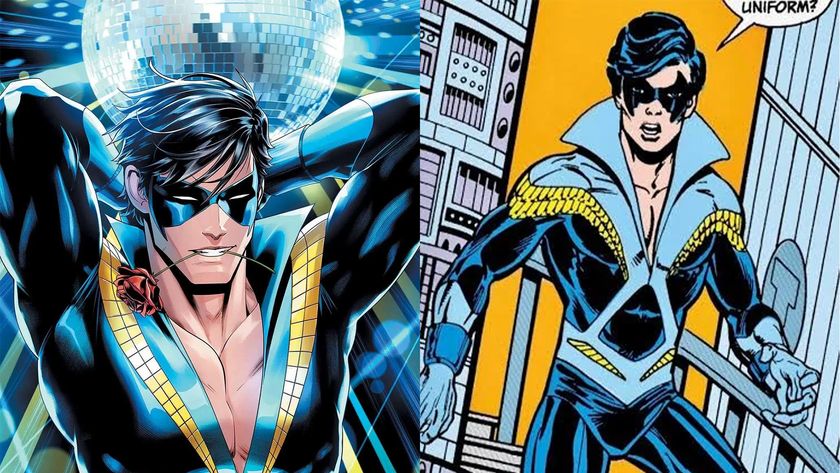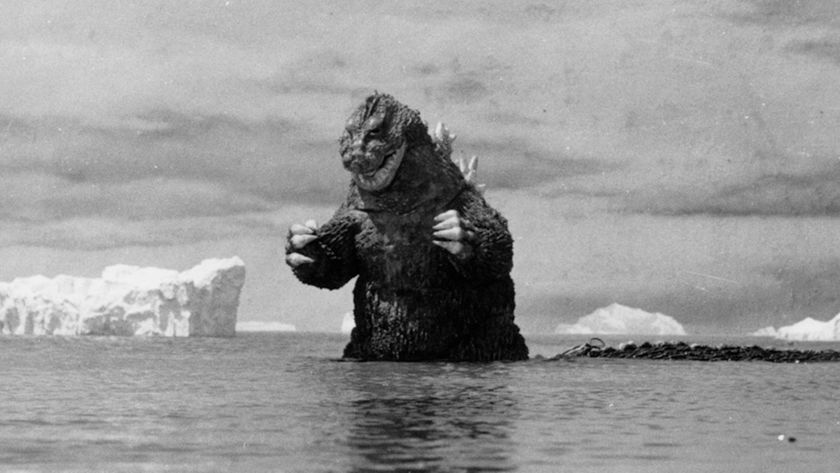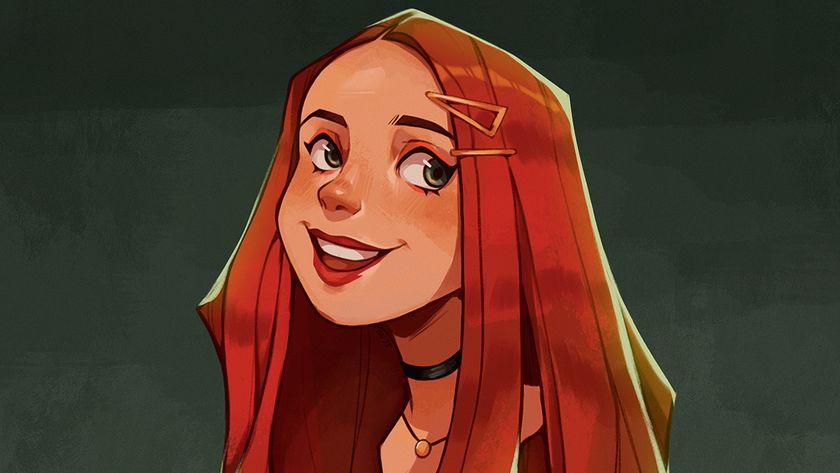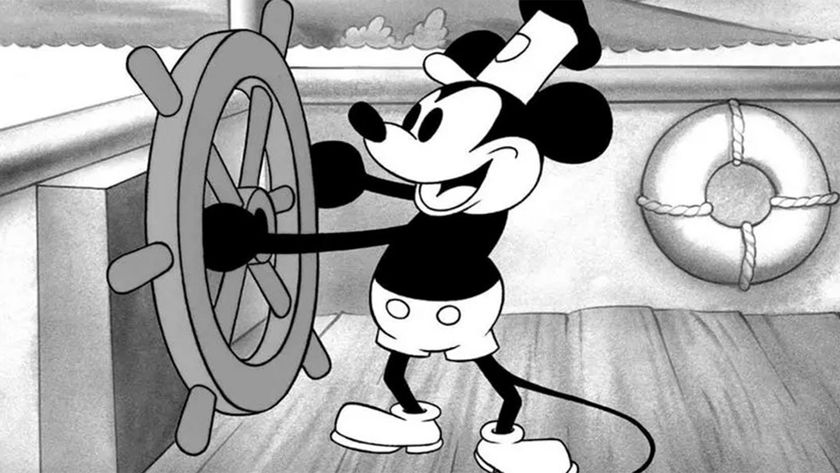How to draw a character in pen and ink
Top tips for improving your pen and ink drawing skills.
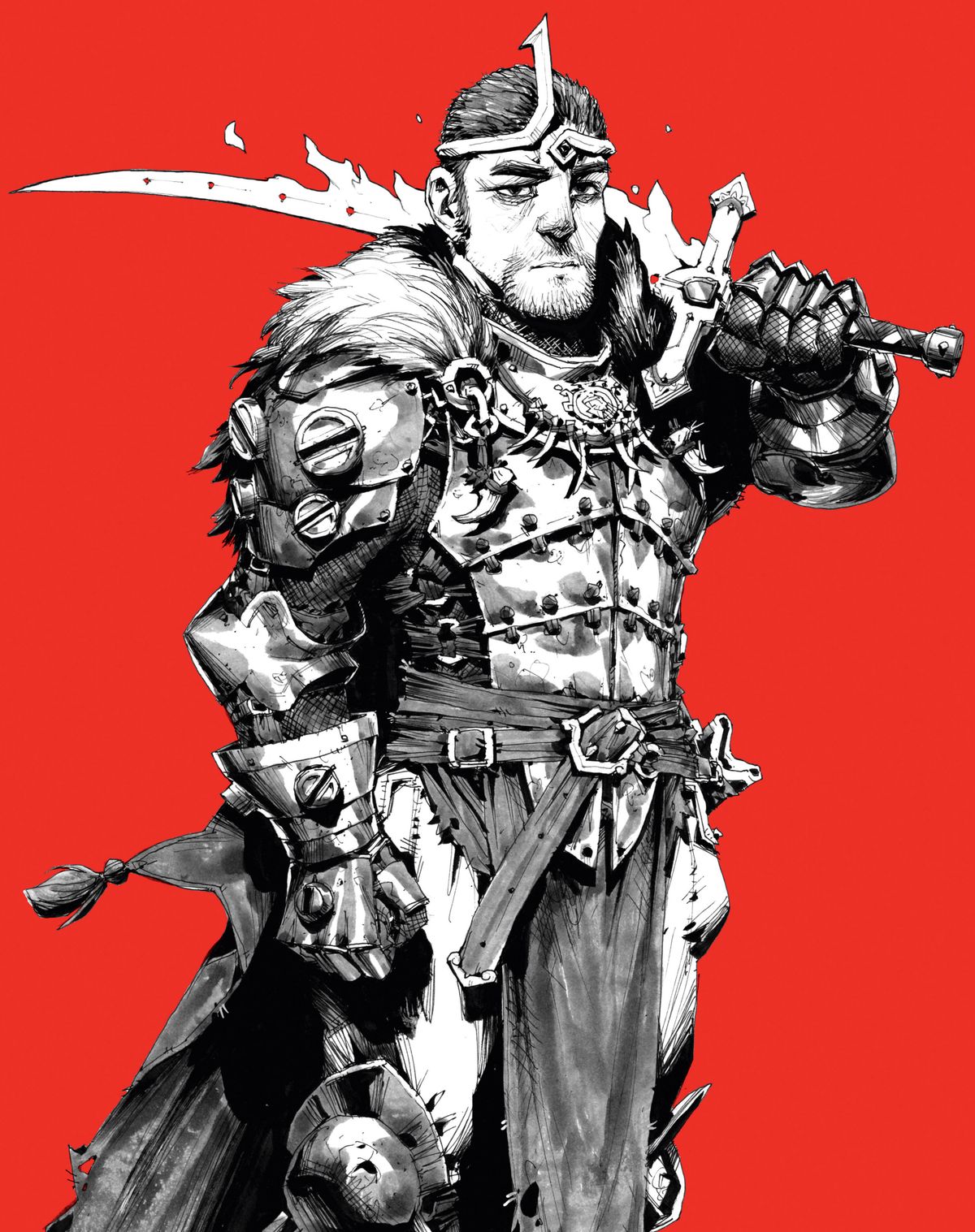
As an artist at a game studio I’ve forgotten most traditional mediums, but ink always calls back to me. After a day of staring into monitors, I want nothing more than to sit down with my sketchbook. In this tutorial, I'll walk through how to ink a character with confidence – in this case, a moody warrior. Don't have the right tools already? Take a look at our guide to the best pens around.
I believe any artist looking to learn how to draw people or mythical creatures and environments grounded in reality should put in the hours to study from life. I usually carry around a Moleskine sketchbook for drawing on the go. Constantly absorbing information, no matter how insignificant it may seem, adds to your ever-growing visual library.
I work pretty organically in pen and ink. There will be no grids, no measurements – I like to let the drawings breathe a bit. For a medium as permanent as ink, I find it helps to not get too married to the pencil drawing. (See our best pencils here to get stocked up on materials.) Instead, I set important landmarks, lock down a strong gesture, and dial in on things I’m not as confident at, such as fingers and legs. Once I’m hopeful that the final piece could be cool, I switch out the pencil for the pen.
Click on the icon at the top of each image to enlarge it.
01. Start with thumbnails
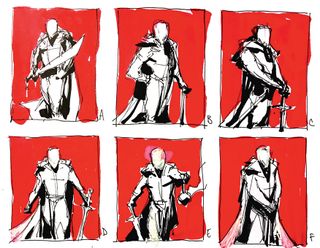
When sketching thumbnails, I’m never too concerned with anatomy or costumes. I aim for a gesture, a stance, a feeling. I keep these vague as things will inevitably shift a bit as I go along. I like to use a thick brush pen to see how shadows might fall into place in the final design.
When I've started to pin down what I want, I create a more specific thumbnail. This gives a better idea of what the final piece should be, but still keeps it small. Here, I can start to think about what the face and armour could look like, all without being forced to lock anything down.
02. Explore costume ideas
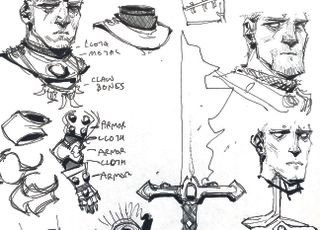
I make notes to myself separately so things don’t get too muddled. I jot down details I want to include to make the figure feel like an individual – here, the claw necklace, tassels on his cape, and scars. These mostly solidify my final thoughts so I don’t spend too much time erasing on my final paper.
Get the Creative Bloq Newsletter
Daily design news, reviews, how-tos and more, as picked by the editors.
03. Produce a pencil sketch
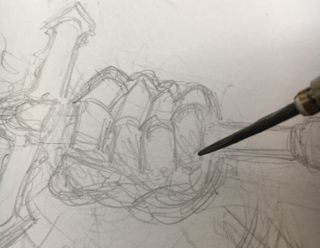
From the thumbnail I start sketching out the final image with a 2H pencil so that the image remains light for best inking conditions. For this piece I’m using Strathmore 9x12 Bristol pad. At this stage, I’m just making sure all the major elements are in the correct position before I start narrowing in on details.
I want to focus on the face, hands and sword, so I’ll spend a little more time clearing those up for myself. I like to keep the rest of the sketch as loose as possible to preserve a little spontaneous energy as I start to ink.
04. Make adjustments
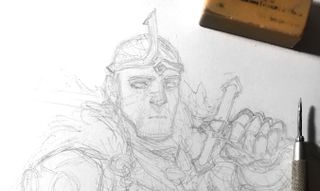
I step back and give the final image a look over to check my proportions. I take into account the figure's muscle structure underneath the armour to make sure everything is believable. I have to make small adjustments to give him the bulk I want.
Since the face is the most important focal point, I spend most of my time getting it right before I start lining. He’s a warrior prince; he should look a little worn and weary, yet still regal. If I have to, I’ll pull up a portrait reference to make sure it looks just right.
05. Mark out the shadows
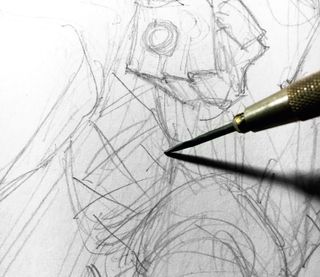
The last step before I move into ink is to plan out where I want to add shadows using Xs where any areas of solid black will sit. I take into consideration where I want to lead the viewer's eye – it's a good idea to create a lot of contrast around any focal points such as the face, hands and sword.
06. Get started with ink
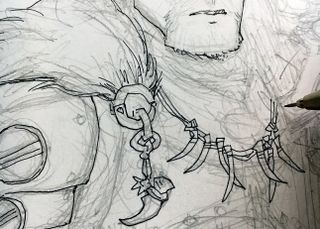
Take a shot of whiskey, because there’s no second guessing yourself here: It's time to start inking. For this piece, I'm starting with a variety of Pilot Hi-Tec-C ink pens. If something can be done with one stroke, never use two – too often I see an artist who’s new to ink use 10 strokes with what can be accomplished with one. Practise the route in the air above your art, and then execute perfectly.
07. Develop different textures
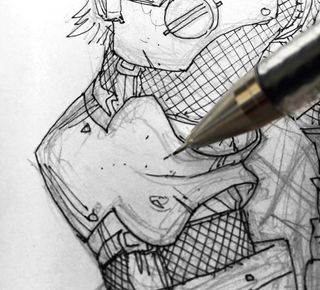
I have a few different materials I want to convey here, such as fur, metal and cloth. All of these can be distilled down with specific details. Fur can be shown through large clumps and individual strands, metal with nicks and dents, and cloth with weave patterns.
08. Work on the shadows
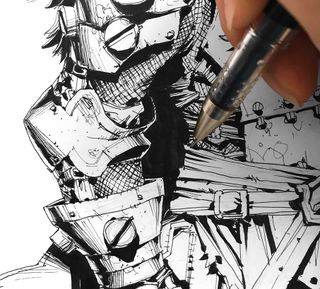
With a brush pen (I'm using one by Pentel), I start filling in large spots and hitting small dabs of ink in areas that I identify won’t receive light in a manner similar to ambient occlusion on a 3D model. These shadows start to give weight and dimension to the character, and help pop him out.
Cast shadows can remain harsh, but form shadows need to be softened, so I go back to the Hi-Tec-C and start hatching. I use my whole gamut of pens ranging from 0.25 to 0.4, and grey to achieve my desired level of smoothness between the brush pen and the thinner ink lines.
For advice on which pens to purchase, see our best pens buying guide.
09. Clean up the image with white highlights
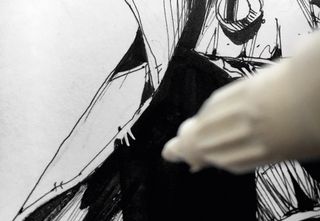
With a Molotow white paint pen, I can pick out details such as stray hairs from spots previously covered in black. I use this technique sparingly to keep the surface of the piece as clean as possible, while also providing a nice, finished look. I can also use the pen to fix minor accidents.
10. Bring in a grey tone
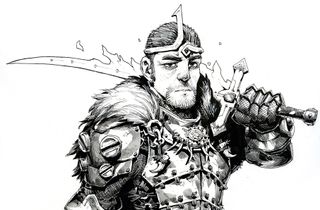
The theory behind the use of my grey wash is to reinforce my focal points and materials, namely anything reflective such as polished metal. The absence of the wash in this case leaves behind the blank white page, picking out a highlight and effectively communicating what the armour is made of.
11. Finish the painting in Photoshop
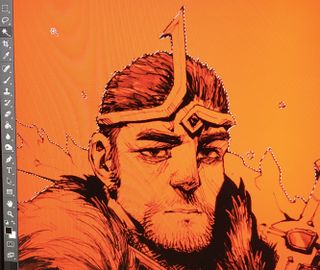
After scanning, I make a few minor tweaks in Photoshop (get Adobe Creative Cloud here) and mask out the character from the negative space using the Magic Wand tool. I contract the selection by a few pixels and fill it with white, then on a separate layer, fill the background with a bold red to finish it off.
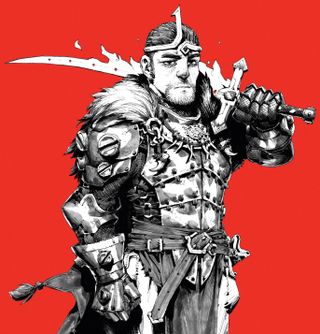
This article was originally published in ImagineFX, the world's best-selling magazine for digital artists. Subscribe to ImagineFX.
Read more:

Thank you for reading 5 articles this month* Join now for unlimited access
Enjoy your first month for just £1 / $1 / €1
*Read 5 free articles per month without a subscription

Join now for unlimited access
Try first month for just £1 / $1 / €1
